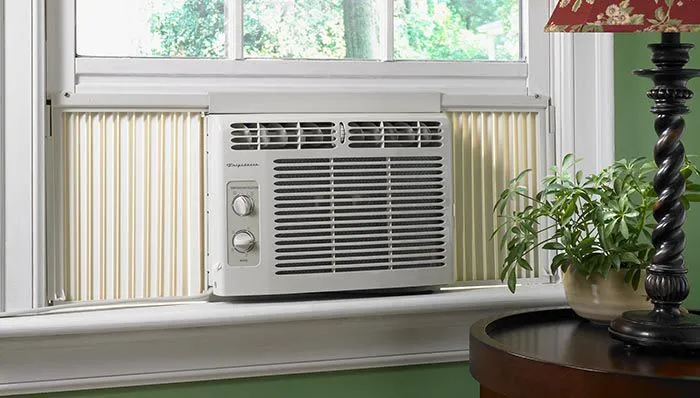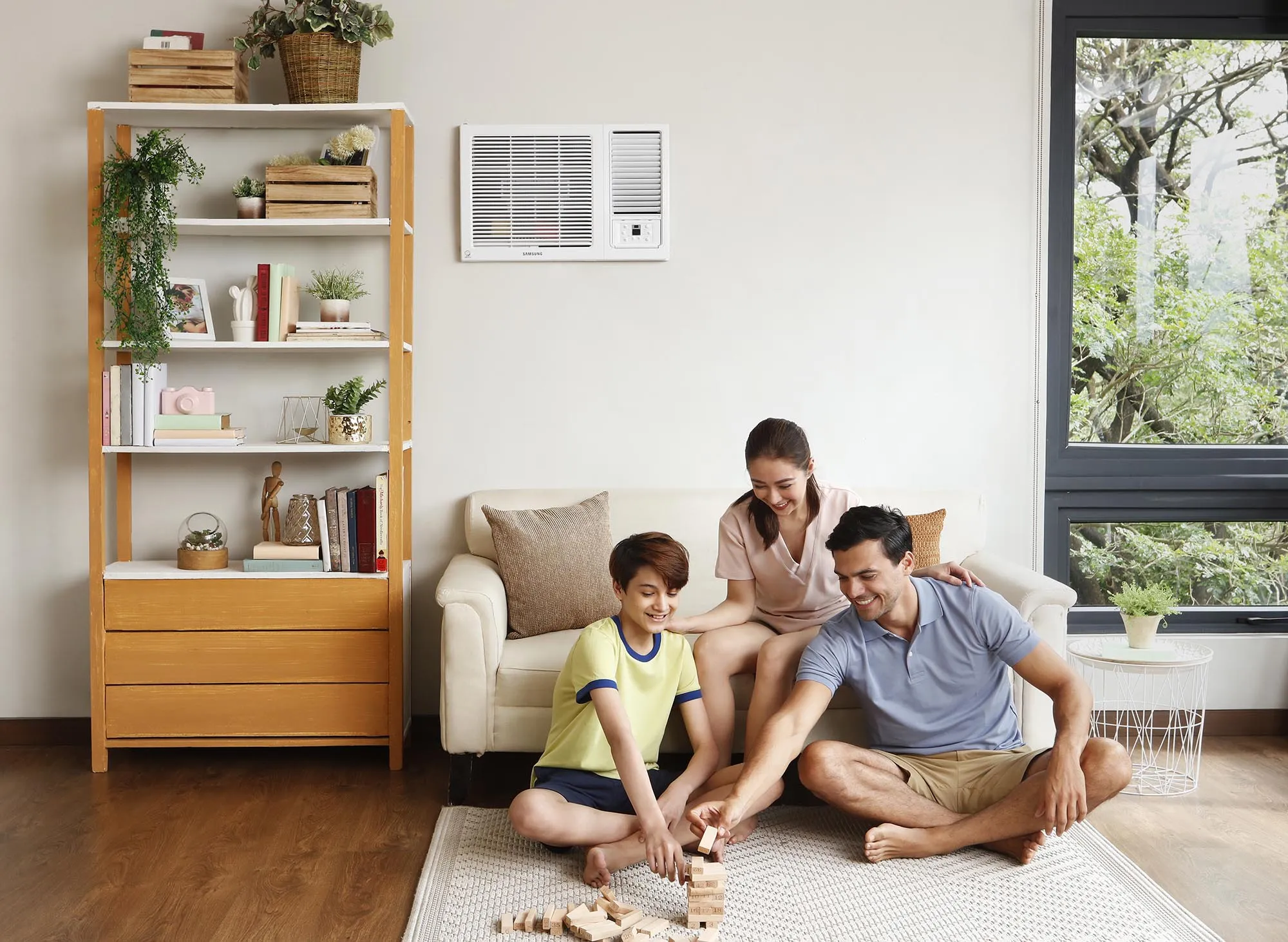Window Air Conditioning System: Definition, Working principle and Pros and Cons

A window air conditioner, also known as a box air conditioner or wall air conditioner, is a self-contained cooling system that is installed into a window or wall opening. It contains all the components necessary to cool and circulate air in a single unit.
Window air conditioners are commonly mounted in a window frame or wall sleeve. This allows the interior air to be cooled while venting the hot air outside. They are easy to install and require only a power outlet nearby to operate.
Window air conditioners are very popular in residential settings, especially older homes without central air conditioning. They can cool one or a few rooms at a time. According to Australian statistics, over 35% of households use window or wall air conditioners. They are also used frequently in small commercial spaces like offices, server rooms, workshops, etc.
The window air conditioner cools indoor air using a refrigeration cycle. A compressor pumps refrigerant that absorbs and removes heat from the air inside the room. This cooled air is then blown out through the front vent using a fan while the hot air is exhausted outside. Some models also have a heating mode that reverses the cycle to bring warm air into the room.
Window air conditioners have the advantage of being affordable, easy to install DIY, and allow zoning certain areas for cooling and heating. As they are compact units, window ACs do not take up floor space. They provide spot cooling and are energy efficient.
The major downside is that a window or wall space is occupied by the air conditioner which blocks natural light and views. They can be noisy and need to be removed or covered during winter. Installation in a rental property requires permission.
In Australia, a new window air conditioner typically costs between $400 to $800 depending on the capacity and features. Installation by a professional may cost extra $100 upwards if wall sleeves or electric work is also required. Operating costs are around 20 to 25 cents per hour depending on the unit’s energy rating.
What is a Window Air Conditioning System?
A window air conditioner is a compact, self-contained cooling system designed to be installed in the window or wall opening of a room. It contains all the basic components of refrigeration in a single box - evaporator, condenser, compressor, expansion valve and refrigerant.
The working principle involves a refrigeration cycle where heat is absorbed from the air inside, transferred outdoors, and emitted to the exterior leaving cooled air to circulate indoors. Moisture may also be dehumidified in the process. All this is done using a small hermetically-sealed system charged with refrigerant gas and needing just an electrical outlet to power the operation.
The main advantages of window ACs are - easy installation, affordability, zone or spot cooling so only needed spaces get chilled, does not occupy room space and flexibility to take the unit out when not required.

Who invented the window air conditioner?
The origin of the modern window air conditioner dates back to 1945 when two engineers from the Chrysler Motors Corporation - Robert Sherman and Robert Schriber - invented the compact unit to meet the cooling needs in buildings.
The history behind this technological advancement was the demand for affordable air conditioning following World War 2. Central cooling systems were complex and expensive to install so a cheaper, versatile alternative was created for houses, apartments and offices.
What made this possible was the availability of improved synthetic refrigerants and sealed unit components that did not require specialised skills or tools to fit into the existing structure. The window air conditioner was user-friendly, consumed less power compared to a large system and provided zonal temperature control. This novelty caught on quickly and by the 1950s, window ACs became very popular in Australia's warmer parts. Today, simpler versions continue to provide spot cooling and heating in homes and workspaces cost-effectively.
How does a window air conditioning System work?
Window air conditioning systems work by transferring heat from the interior air to the outside leaving cooled and dehumidified air to circulate indoors for comfort cooling. The same system can reverse the refrigerant flow to absorb outdoor heat and release it inside for heating.
For cooling, the window AC uses a vapour compression refrigeration cycle leveraging phase change of refrigerant between liquid and gas. The most widely used eco-friendly refrigerant today is R410a. Air from the room enters the AC unit and passes over cold evaporator coils, lowering its temperature. Liquid refrigerant in the coils absorbs heat and evaporates into gas which is then pumped to the condenser by the compressor.
Here, the hot compressed gas dissipates heat outdoors via the condenser and turns back into liquid. The refrigerant goes through a pressure lowering expansion valve and returns to the evaporator at cool low pressure to repeat the heat absorption process. This refrigerant flow from indoors to outdoors transfers room heat outside thereby providing cool conditioned air.
For heating, the cooling process is reversed via a valve that makes the refrigerant flow backwards. Heat from outdoor ambient air gets absorbed into the refrigerant gas while passing through the outdoor condenser coil. Then it releases this heat indoors from the room-side evaporator coils. Thus warm air is circulated inside for heating effect.
The amount of heating or cooling produced depends on the window AC unit capacity, ranging from small 1.47 kW systems for 150 sq ft rooms to larger 3.52+ kW units for bigger spaces. Performance also varies based on energy efficiency ratings denoted by the stars on the appliance.


What are the window Air conditioning System Components?
The key components of a window air conditioner are:
- Evaporator - Coil that absorbs heat from interior air and evaporates refrigerant into cold gas
- Condenser - Coil emitting heat from condensed refrigerant gas to outdoors
- Compressor - Pump that pressurises refrigerant gas from evaporator and pushes it into the condenser
- Expansion valve - Positioned after the condenser to lower refrigerant pressure before it enters the evaporator again
- Fans & Grills - To blow air over the evaporator and condenser coils
- Fans & Grills - To blow air over the evaporator and condenser coils
- Control Panel - With buttons for power, mode, thermostat, fan speed and timers
What is the window Air conditioning System Type?
Window air conditioners come in different capacities to match room sizes, such as 1.47 kW can cool 150 sq ft, and 3.52+ kW for 550+ sq ft. Physical dimensions and weight increase with higher capacity. Another distinction is between Energy Star rated energy efficient models vs standard models. Smart ACs can connect to home WiFi for app controls. Overall types cater to cooling capacity needs and advanced functionality.

Get in touch






.png)






.png)